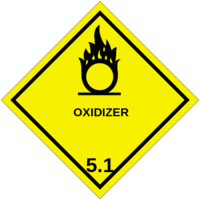-
High altitude-based emergency communication system
Oceus Network will conduct a test of its emergency communication system in high altitude: it will place its 4G LTE Xiphos portable 4G LTE broadband network on a balloon which will carry Xiphos to near-space altitude; by placing an emergency communication system on an airborne platform, a zone of coverage is created to restore critical communications in the first hours after a catastrophic event
-
-
Movie-like emergency training system for law enforcement
Raytheon’s VIRTSIM law-enforcement training system employs licensed motion-capture technology similar to that used in movies such as “Lord of the Rings,” “Avatar,” and, most recently, “The Avengers”; the system is being offered to the law enforcement community as an affordable, twenty-first century alternative to outdated training practices that do little to replicate real-life situations
-
-
LoJack technology helps in two rescue efforts
Two services from LoJack allow police to rescue two young kids in a stolen car, and locate an 82-year olf man who wondered away from home
-
-
Hughes shows Emergency Networking Solutions ahead of hurricane season
According to the National Hurricane Center, the 2011 hurricane season’s biggest event — Hurricane Irene — caused more than $15 billion in damage and killed forty-nine people; this year, projections are mixed, as meteorologists predict fewer named storms but greater proximity to the U.S. coastline
-
-
Improving fast-moving mobile networks
Mobile ad hoc networks (MANETs) allow people in multiple, rapidly-moving vehicles to communicate with each other – a useful technology in for emergency-response situations or soldiers under fire; researchers have devised a method to improve the quality and efficiency of data transmission in these networks
-
-
Direct-mail list company adds emergency responder mailing lists
The growing attention to preparing for, coping with, and recovering from natural and man-made disasters means that more government and private funds are allocated to emergency services, and more professionals are trained and hired to perform emergency-related services; direct-mail companies have noticed this trend
-
-
Aussie emergency services industry continues to grow
Over the past five years, emergency services funding in Australia has been driven by population growth, which has led to an increase in demand for emergency services; emergency services industry will generate revenue of AUS$20.2 billion in 2011-12, an increase of 4.5 percent on the previous year
-
-
City of Seattle Fire Department improving firefighter, EMS responses
New communication system allows Seattle Fire Department to use new voice, video, and wireless by providing secure and fast switching between multiple networks
-
-
AT&T selected as TacCom prime vendor
AT&T Government Solutions has been selected as a prime vendor under the Tactical Communications Equipment and Services (TacCom) contract; the contract, administered by DHS, is a multiple award, Indefinite Delivery-Indefinite Quantity (IDIQ) contract with an overall value of $3 billion and a base contract period of two years and three, one-year options
-
-
Las Vegas first responders testing next-generation LTE broadband
Public safety officers in Las Vegas, Nevada, are on the air with a 700 MHz Band 14 LTE (Long Term Evolution) solution through a pilot program that demonstrates the potential of next-generation wireless broadband technology
-
-
Teaching robots to pick up oddly shaped objects
The use of robots in military and first response missions is growing; in some of these missions – for example, checking a suspicious object, lifting an oddly sahped IED off the floor — robots need more flexibility and dexterity than is currently available; researchers offer encouraging news on this front
-
-
LMR market to reach $16.2 billion by 2017
Next generation mobile/wireless technologies continue to suffer from coverage and reliability issues, which are key considerations for law enforcement, emergency medical services, disaster recovery, and other public safety applications; as a result, a large number of critical services continue to remain committed to narrowband analog connectivity such as a Land Mobile Radio network; this is good news for the future of the LMR market.
-
-
New micro helicopters for search and rescue missions
New micro helicopters have a diameter of about fifty centimeters, weigh only 1,500 grams; they do not rquire GPS or remote control to navigate; they are designed to maneuver in tight or even enclosed spaces, and to detect and fly around any obstacle; possible uses could include protection or rescue missions, and they are ideal for flying over disaster areas and giving a picture of the situation from the air or locating victims
-
-
Harris deploys public safety communications system in Virginia
Harris Corporation has received a $10 million contract from Pittsylvania County, Virginia, to deploy a public safety digital communications system based on P25 Phase 2 standards
-
-
1962 disaster leads to stricter hazmat transportation regulations

Federal transportation law requires all vehicles carrying hazardous materials to display information placards, diamond-shaped, color-coded signs with numbers and symbols posted at various points on the truck; the law is the result of a 1962 Connecticut accident, in which four fire fighters died because they were not aware of the hazardous material a truck, which was on fire, was carrying
-
More headlines
The long view
The Surprising Reasons Floods and Other Disasters Are Deadlier at Night
It’s not just that it’s dark and people are asleep. Urban sprawl, confirmation bias, and other factors can play a role.
Why Flash Flood Warnings Will Continue to Go Unheeded
Experts say local education and community support are key to conveying risk.
